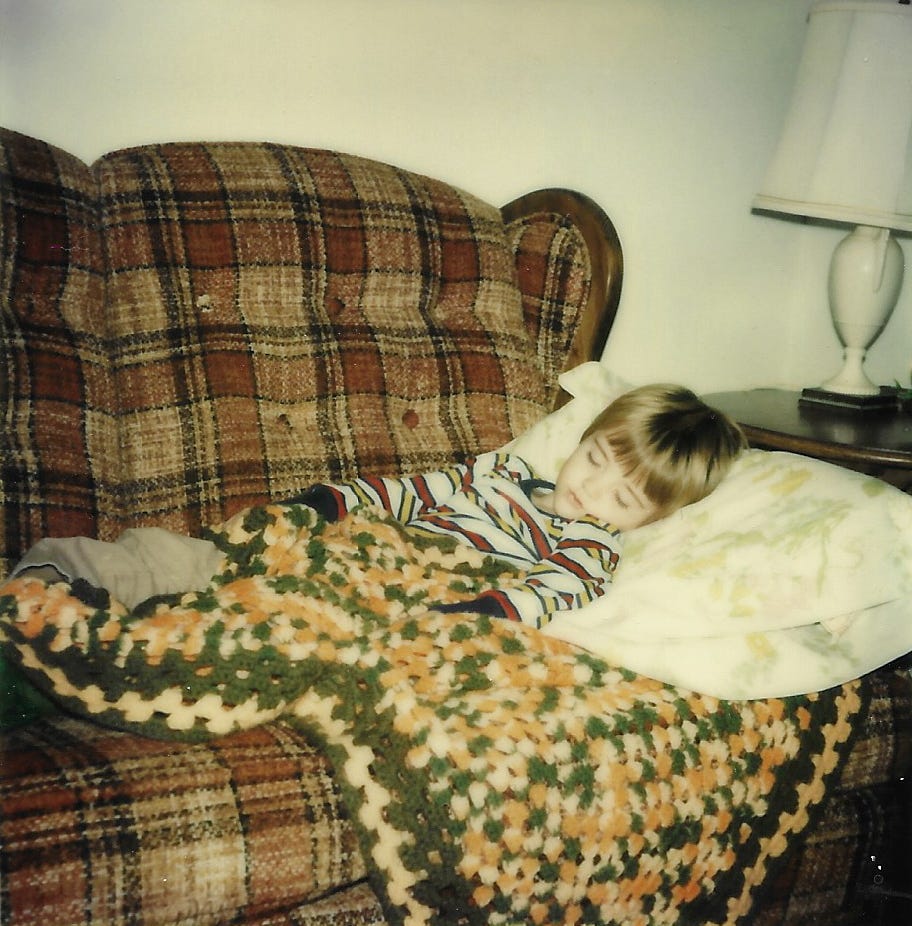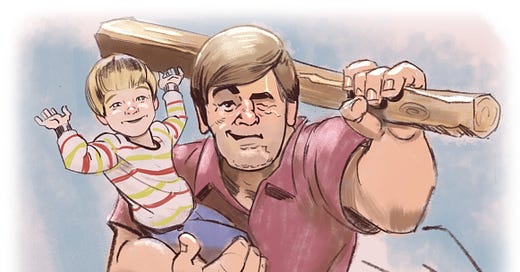My Cinema Journey: The Memphis Era
Rednecks and princesses and gorillas, oh my!
The most polite person in the online movie community (perhaps the entire Internet) is a gentleman named Daisuke Beppu. He has a YouTube channel celebrating Criterion DVDs and all aspects of cinema. He talks to movie lovers and cinephiles of all stripes and he usually asks about a person’s “cinema journey.” In some ways, The Best Movies According To Some Guy Named Milton is my cinema journey. In addition to the films themselves, there is important personal context—the settings, time periods, relationships, and life circumstances that shaped my cinematic experiences. I’ll supplement the reviews with occasional bonus essays about that journey.
So, back to Memphis. One of my most vivid memories of that period was all the neighborhood kids being summoned to the front of the apartment complex and being given orange glow-in-the-dark flags that we attached to our bicycles because there had been a series of accidents with kids being run over by cars at night.
February 1st, 1976. As far as I am concerned, at this point in my limited experience, the greatest epic of human narrative is broadcast on this date: The Six Million Dollar Man: The Secret of Bigfoot (Part I). On that night, I am frustratingly introduced into the concept of a cliffhanger, having to wait until February the 4th to see Part II.
My family was nomadic. By tenth grade, I had moved over twenty-nine times. I counted. And probably missed a few. Why did we move so much? My father was a con man. He would burn his bridges in a given town and we would have to flee. On more than one occasion, I was woken up by my dad telling me to start packing. We were bugging out. Again. Thankfully, my mother was an amazing nurse, and she could get employed as soon as we landed in the unfortunate venue for my father’s latest get-rich-quick scheme.
As a kindergartner/first-grader in Memphis, all moviegoing was tied to my parents’ choices. My father sold my mom on the idea that I was too young to comprehend or be negatively affected by adult content in movies, so I’d get taken to the greasy offerings of 1970s Redneck Cinema. Lots of flicks about car chases, cops n’ crooks, walkie-talkies, trucks, bars, cigarettes, beers, and titties. Once, my mother, trying to protect me, covered my eyes during a bar scene with a woman walking around topless. I pushed her hand out of the way. She said, “I thought you wanted me to close your eyes.” Pfft. Lame excuse. Even with the limited mental dimensions of a kindergartner, I knew what she was doing and I protested. Lemme see the boobies, mom.
My father would sometimes skip his sales job and drag me to the movie house on weekdays while mom was working at the hospital. I can still vividly remember the smoking room at the back of the theater. For those too young to have seen those days, movie theaters would remove some back rows and enclose a section with a long glass wall as a designated smoking section. There were no seats. For some reason, I loved it in there. The sound quality was different. I think they had mini-speakers inside. Like somehow you were more intimately connected to the action. The projector light reflected off the silver screen, refracted through the glass windows, and bathed the white smoke clouds with light which took on a dreamlike quality.
As he ditched work, I spent endless hours in those smoke-filled chambers, watching redneck anti-heroes drive muscle cars and fight the law. Movies like Dirty Mary and Crazy Larry, The Car, Gone in Sixty Seconds, and the pinnacle of the genre: the Walking Tall films. The first Walking Tall film I remember seeing had Bo Svenson in the main role, so, I preferred him over Joe Don Baker.
The Walking Tall films featured the lore of a real-life figure named Buford Pusser, a renegade sheriff who fought a one-man war on moonshining and prostitution in Tennessee. He was known for carrying an iconic wooden blunt weapon. Our family had a relative who was a sheriff in Mississippi and at a weekend barbecue cookout, I got to meet the real-life Sheriff Pusser in person and posed for a picture with him just a few weeks before his death (that pic was, alas, lost in one of our many moves, but the amazing artist Chris Doray has recreated it with an illustration below).
My father had a fixation with law enforcement at the time. Perhaps it was his criminal intent? He would get friends in the police force to give him some sort of honorary badge that looked like the real thing. He’d flash it around acting like a big shot at any opportunity. One weekday, after going to one of his deep-fried flicks, we ducked behind the parking lot of the movie theater where there were some creepy woods and an abandoned run-down old house. My father, inspired by the redneck outlaw cinema we’d just witnessed, took out a pistol, set up some coke cans, and proceeded to shoot target practice.
After a few shots, a panicked woman started running out of the run-down house. Apparently it wasn’t abandoned after all. She begged him to stop shooting. He flashed his honorary badge and just said it was official police business and not to worry. He packed up and peeled out of there. Impersonating a police officer: the first, but certainly not the last, illegal act I’d witness him doing.
After the target practice incident, a pair of seismic cinematic events shook the foundations of my movie world. First, in the winter of late 1976, a remake of King Kong was released. It was the first live-action movie I ever saw that departed from the grungy terrain of redneck moviedom. A giant gorilla climbing the World Trade Center? Movies can do this?! Okay, now I’m even more interested.

And then, one evening in June of 1977, we drove to the movie theater and I saw something I’d never seen: adults standing in a line. A line that stretched a whole block. My young brain could not comprehend it. Until then, every line I’d ever seen was for kids at school, to proceed in an orderly fashion. But here were grown adults, hundreds of them. Just standing.
My father warned - “Might be a few hours before we can get tickets.”
What is this man talking about? Until this day, getting movie tickets involved walking up to the box office where there would be, at most, maybe two people in front of you before picking up a ticket.
So we stood in line for about three hours while my parents smoked several Vantage cigarettes, my father’s packs being the iconic red/blue bullseye logo of the brand, with my mother’s being the dark/light green menthol variant. Telling the difference between those two versions of the brand was probably my first consumer skill. By age eight, I'd often be tasked with picking up cigarettes on my comic book runs to the convenience store.
Waiting in this long line was one of the rare moments where my father ever demonstrated any capacity for patience. The man could never wait for anything. But this time, he did, dutifully. He told me, “this one is supposed to really be something else.” We finally got ushered into our seats. I was still disoriented by this radical change in moviegoing logistics. They didn’t even tell me what this “something else” was that I was about to see. I just naturally assumed it was another bullet-ridden car-chase-havin’ whiskey-poundin’ tale of misunderstood good ol’ boys on the run from Johnnie Law.
Then the lights dimmed, some light-blue text said “A long time ago in a galaxy far, far, away…” and, for the first time, I experienced cinematic communion.






Awesome!!
Love the origin story of Milton's love affair with film.